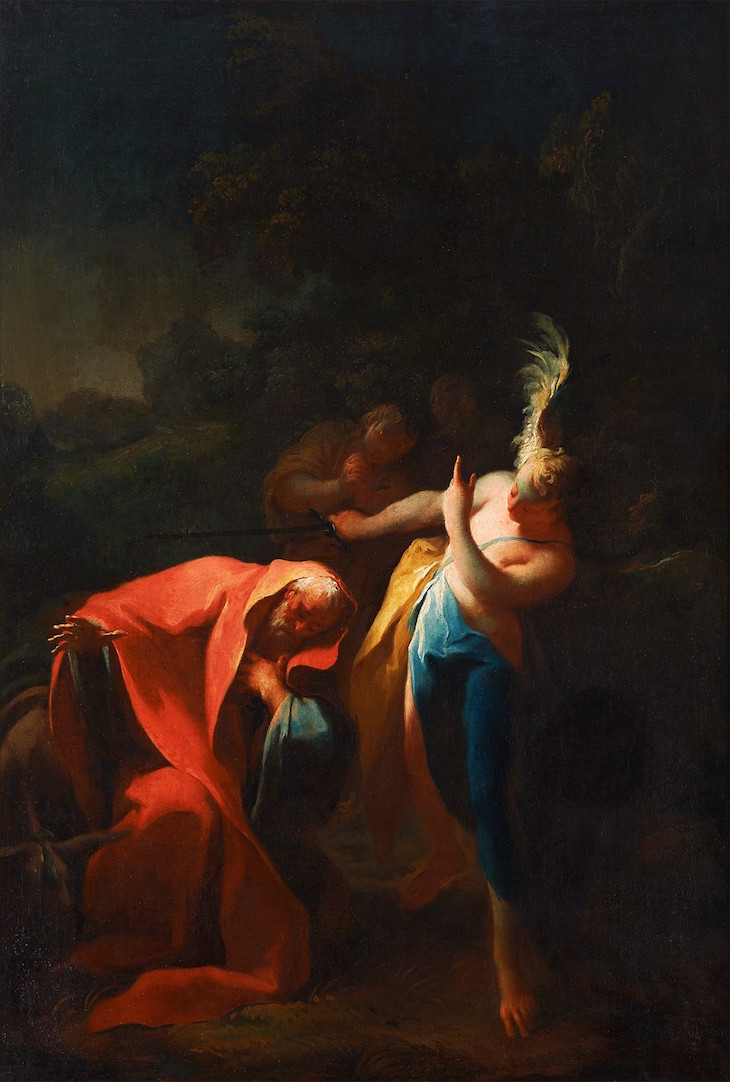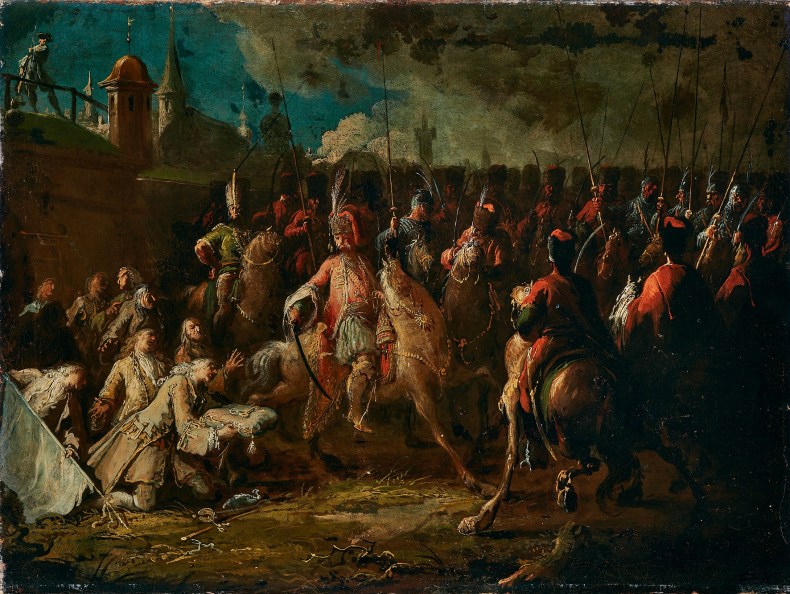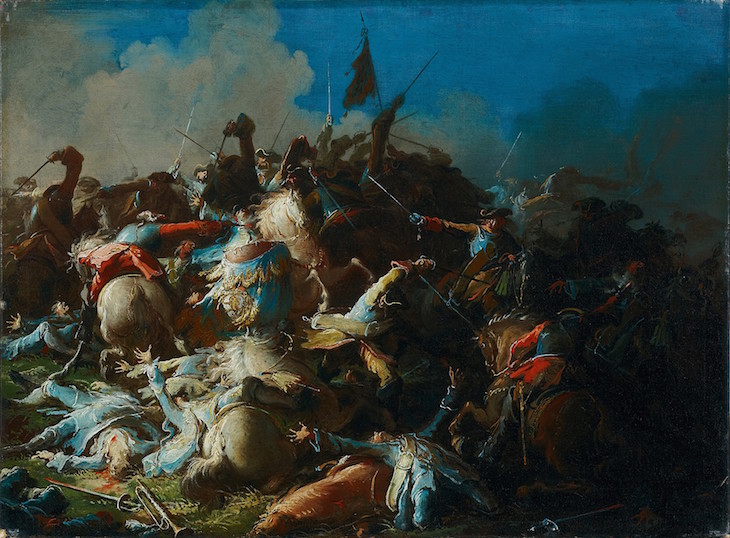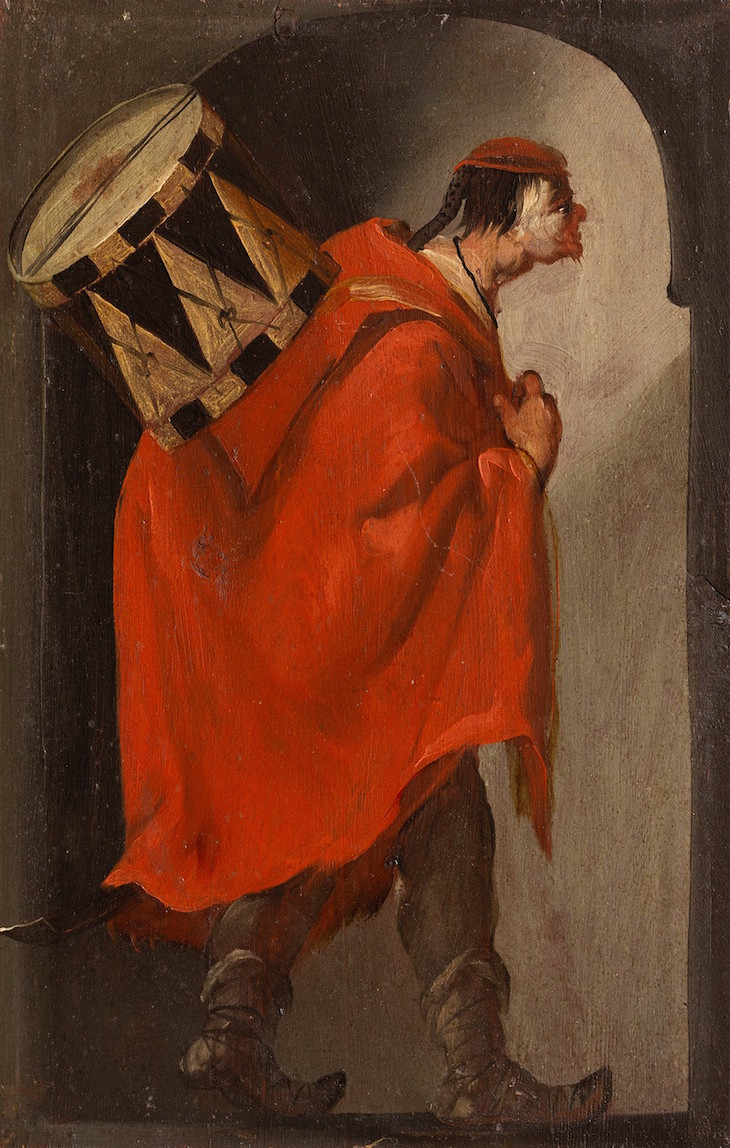Rebel of the Baroque
He may have taught at the Vienna Academy of Fine Arts and counted Habsburgs among his clients, but Mildorfer has never before had a monographic exhibition. Three centuries after his birth, this show takes in early battle scenes and major religious commissions. Find out more from the Belvedere’s website.
Preview the exhibition below | View Apollo’s Art Diary here

Four-part Old Testament angel cycle: Balaam leans in front of the angel with the sword (c. 1740), Josef Ignaz Mildorfer. Photo: Jürgen Eheim; © Hofburg Brixen
On show in the exhibition in its entirety is Mildorfer’s early cycle of scenes from the Old Testament, painted around the time he began to win painting competitions at the Vienna Academy of Arts, of which he later became a teaching member. This heavily chiaroscuroed scene shows the diviner Balaam, saved from a dreadful fate at the hands of the angel by his percipient donkey, which bows its head to the left of the painting.

The Munich Surrender (1742), Josef Ignaz Mildorfer. Photo: © Salzburg Museum
Mildorfer painted studies of battle scenes from his earliest professional years, responding to the tumultuous events of the Wars of the Austrian Succession. This painting shows the moment in which Bavarian forces, who had fought to depose the Habsburgs in Vienna, capitulated to Holy Roman Emperor Charles VII.

The Battle of Schärding (c. 1742), Josef Ignaz Mildorfer. Photo: © Salzburg Museum
At the Battle of Schärding (or ‘Sahay’), French and Prussian forces defeated the Austrian armies in southern Bohemia, consolidating the victory of Frederick the Great at Chotusitz a week previously and paving the way for the deposition of the Habsburg empress Maria Theresa. The whorl of stricken cavalry in Mildorfer’s chaotic composition contrasts with the stately repose of the Munich Surrender (above). By the end of the painter’s career, the reinstated Maria Theresa would number among his many powerful clients.

Pandur (1742), Josef Ignaz Mildorfer. Photo: © Wolfgang Gafriller
Mildorfer’s curious painting depicts one of Trenck’s Pandurs, a light infantry unit raised after an order of Maria Theresa in 1641. Predominantly made up of volunteers from Slavonia, the Pandurs wore no uniforms, and at their presentation to the empress in 1641 they marched with 12 musicians – flautists and drummers. These were dubbed the ‘Turkish band’, having been inspired by Ottoman military parades, it has been claimed that they played a key role in the development of martial music in Europe.











![Masterpiece [Re]discovery 2022. Photo: Ben Fisher Photography, courtesy of Masterpiece London](http://www.apollo-magazine.com/wp-content/uploads/2022/07/MPL2022_4263.jpg)
Has the Fitzwilliam lost the hang of things?